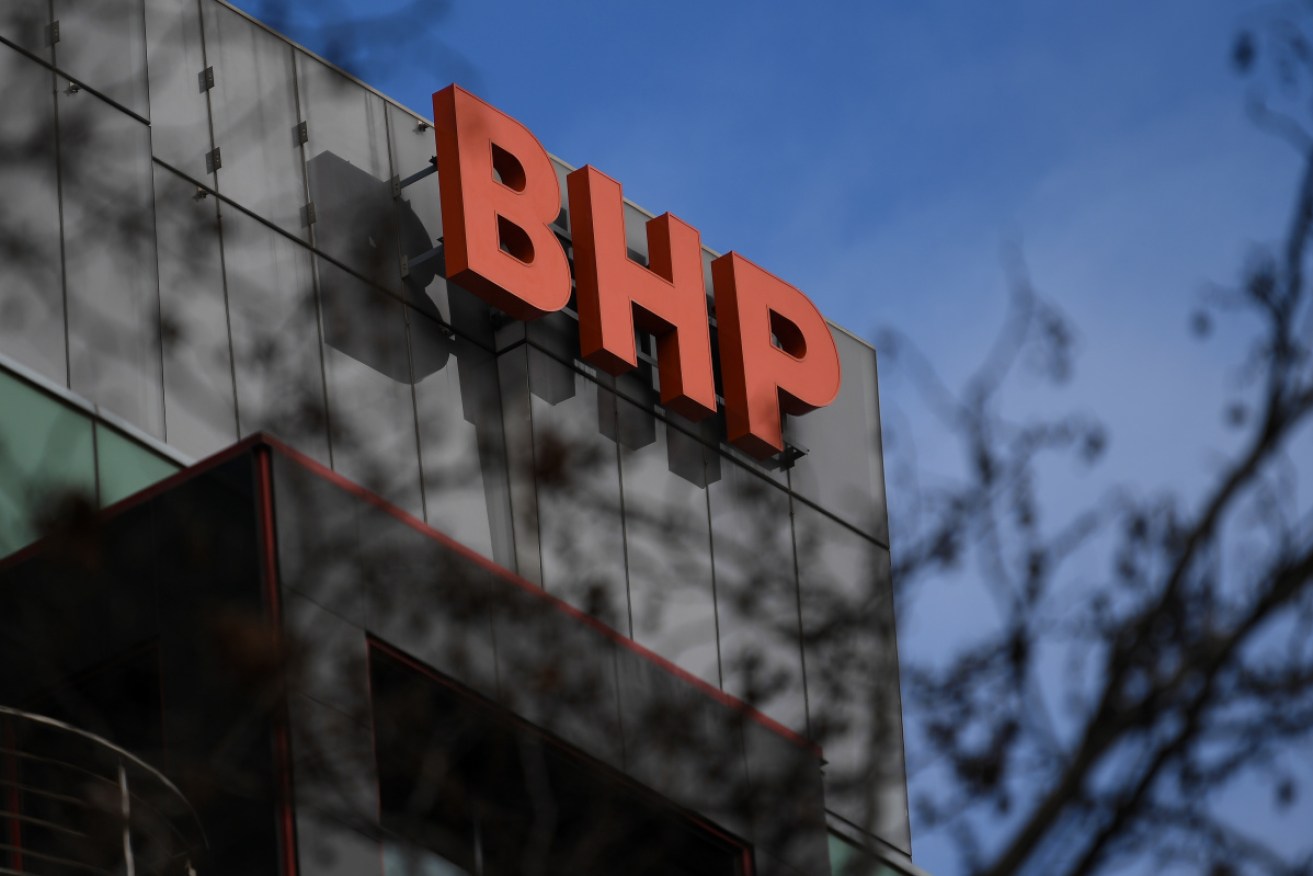BHP posts drop in FY profit, despite production records

Profits are down at BHP on lower commodity prices, but the mining giant says it is managing global and local inflationary pressures better than its rivals. Photo: AAP
BHP has posted a sharp fall in profit on lower prices for iron ore and copper, but expects to benefit from the “electrification mega-trend”.
The mining giant on Tuesday revealed a 58 per cent fall in net profit to $US12.9 billion, amid cost pressures and global economic uncertainty.
Even accounting for the sold-off petroleum business, underlying attributable profit, which adjusts for discontinued operations of $US10.7 billion, fell by 37 per cent to $US13.4 billion.
“Our financial results for the year were strong, underpinned by reliable production, together with capital and cost discipline as we managed lower commodity prices and inflationary pressures,” CEO Mike Henry said.
He said commodity demand has remained relatively robust in China and India, even as developed world economies have slowed substantially.
“More broadly, there is increased recognition of the importance of critical minerals and strategies across the globe to incentivise investment in supply and demand, which provides opportunities and challenges,” Mr Henry said.
Shares in BHP fell 0.7 per cent or 29 cents to $43.23 in opening trade on the full-year result and lower dividend.
The biggest drivers of the fall in profit were a 12 per cent drop in copper and an 18 per cent tumble for iron ore, partly offset by record production at Western Australian Iron Ore (WAIO) and South Australia’s Olympic Dam.
Overall, the cost of mining production is now estimated to be higher than it was before the pandemic.
But BHP said it had managed the impact of inflation on costs better than competitors Rio Tinto, Fortescue Metals and Brazil’s Vale.
The company said that in the long run it expects the infrastructure required for decarbonisation, rising living standards and global population growth will drive demand for steel, non-ferrous metals and fertilisers.
“On the cost front, we expect that the lag effect of the inflation peaks observed in FY23 and continued labour market tightness will continue to impact our cost base throughout FY24,” BHP said.
The company said it was focused on increasing annual production at WAIO to more than 305 million tonnes, with an eye on growth to 330 million tonnes per annum in coming years.
Options under consideration include developing new mines and leveraging existing infrastructure, including at Yandi, increasing ore beneficiation, or building a new hub.
Longer term, BHP expects strength in nickel from the “electrification mega-trend”, and demand for a reliable battery mineral supply chain.
To support growing demand for nickel in the battery market, Nickel West is assessing options for a major smelter renewal project, which could potentially process more nickel from northern mining operations and create a pathway for additional feed sources.
BHP declared a fully franked final dividend of US 80 cents per share, bringing total cash returns to shareholders to $US1.70 per share.
– AAP








